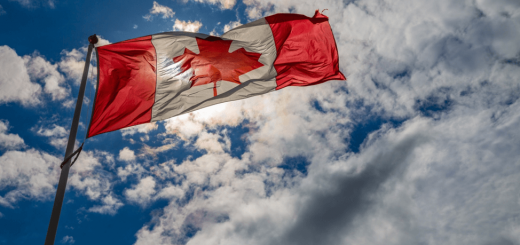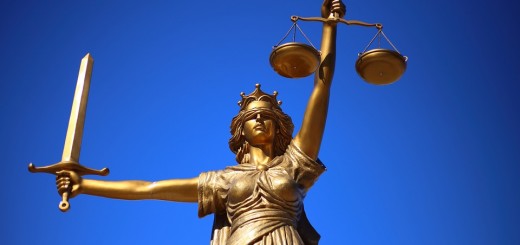Tone at the Top: Welcoming Chief Justice Wagner

You would be forgiven, said Justice Rosalie Silberman Abella at Chief Justice Richard Wagner’s swearing-in ceremony, for forgetting that it is possible for men to become the Chief Justice of the Supreme Court of Canada (“SCC”). A female justice has overseen the SCC for so long that it is tempting to consider male leadership a thing of the past. But there is hope yet, Justice Abella assured us, for aspiring male justices to one day sit on Canada’s top court. “When a man works really hard and is qualified,” she quipped, “he too can become Chief Justice—because it’s 2018.”
In what will certainly be remembered as one of the livelier swearing-in ceremonies, the SCC welcomed Richard Wagner on 5 February 2018 as the SCC’s incoming Chief Justice. The ceremony marked the end of an era for the high court, which thrived under 17 years of leadership by Canada’s first female chief justice, Beverley McLachlin (whose last judicial hearing was on beer, and who has somehow managed to pen a legal thriller in her spare time). Much ink has been spilled about the relative lack of controversy surrounding Justice Wagner’s appointment. He was the SCC’s senior francophone justice, making him a clear contender after almost two decades of anglophone leadership, a known coalition-builder, and well-settled politically in the ambit of Court’s “broad middle.” Yet the question remains: who is our new Chief Justice, and how will he differ from his predecessor? Given that Chief Justice Wagner’s mandatory year of retirement is 2032, we have ample time to get to know him. Then again, he may lead the SCC for the next 14 years—so there is no time like the present to start.
How Does He Vote?
In 2017, Chief Justice Wagner authored 10 decisions, and was in the majority or in concurrence in all. In 2016, he penned 11 decisions and dissented in 2. This trend holds through most of the 2010s. It is fair to say that the new Chief Justice dissents infrequently, particularly in contrast to the Court’s lead dissenter Justice Suzanne Côté. He is not all coalition, however. Chief Justice Wagner took a stand on protecting minority language rights in Caron v Alberta, 2015 SCC 56, arguing against six of his colleagues that Alberta is constitutionally required to translate its laws into French. Commentators have also noticed that he tends to vote more conservatively on criminal law issues than his counterparts. Yet these are broad trends that may evolve as he steps into the role of Chief Justice, which (as detailed below) comes with a unique set of new pressures and priorities.
Leadership Style
As many sources have pointed out, the new Chief Justice has several hallmarks: his team-oriented work style (speculatively the product of his middle-child upbringing), his centrist political orientation, and his commitment to clear writing and argumentation in written decisions. Chief Justice Wagner is also known for his collegiality and his genial contributions to life on the Court. At the swearing-in ceremony, Justice Abella gave a colourful example: If sitting on the Supreme Court is like having eight husbands—with whom one constantly disagrees—Chief Justice Wagner is the husband who ensures the family squabbles remain civil. Coming off a challenging fall session that included Ktunaxa (covered by TheCourt‘s Bailey Fox and Kris Kinsinger), Trinity Western University (coverage here), and Marakah (coverage here), it is easy to see the logic behind elevating a coalition-oriented justice to the top role.
That said, it is very difficult to maintain a flawless track record when it comes to handling difficult issues on the Court. As Kris Kinsinger has discussed, the new Chief Justice recently came under fire for refusing to grant intervenor status to several LGBTQ+ groups, including seasoned intervenor EGALE, seeking leave to intervene in the joint-appeal Law Society of Upper Canada and British Columbia v Trinity Western University et al (collectively “TWU”). Then-Justice Wagner’s decision was likely motivated by time constraints: When he issued the order, the TWU hearing was scheduled for one day only, which significantly reduced the number of intervenor applications he could approve. Moreover, the Rules of the Supreme Court of Canada, SOR/ 2002- 156, s 55, which governs motions for intervention to the top court, has been interpreted to mean that intervenor status should only be granted where the intervenors can offer the court a perspective distinct from the parties’ own points of view. Justice Wagner (as he then was) later expressed to the Globe & Mail that in his view, the Law Societies (arguing against accreditation for Trinity Western’s law school on the grounds of discrimination of LGBTQ+ applicants) would canvass the perspective of the proposed intervenors, rendering their interventions redundant. On the other hand, his decision meant that no LGBTQ+ intervenors would be present for the hearing. This presented a troubling optics issue. In an extraordinary move, then-Chief Justice McLachlin issued a “variance” on Justice Wagner’s order, approving all the LGBTQ+ groups who applied to intervene and extending the hearing length from one to two days. She also issued a press release explaining the Court’s reasons for the reversal—an unprecedented decision, as the Court does not give reasons for its judgements in motions for intervention.
The Role of the Chief Justice
The TWU episode is notable because it highlights the important role that the chief justice plays in shaping and maintaining the SCC’s public image. Justice Wagner’s decision was likely the product of logistical constraints on the SCC’s time, rather than a nefarious intent to silence potential intervenors. Nevertheless, the decision sparked a public relations outcry, and Chief Justice McLachlin stepped in to correct the course. As the leader of the SCC, the chief justice is the Court’s public face as well as its top judge. This part of the job comes with some hefty responsibilities. First, the chief justice is often personally representative of the values that the Court wishes to promote, and is expected to uphold those values on the bench. (This explains the disappointed reaction of many to Prime Minister Trudeau’s failure to appoint an Indigenous justice to the SCC, a move that former Chief Justice McLachlin says would have sent a “very important” message of inclusiveness and reconciliation.) He or she also sets the Court’s priorities, and his or her approaches to legal issues and judicial decision-making shape how the SCC is perceived in national and international arenas. Finally, he or she is in charge of safeguarding the SCC’s public image against scandal or taint. While nobody enjoys bad press, this part of the job is particularly important for courts, whose ability to administer justice erodes when public confidence in the judiciary declines.
Former Chief Justice McLachlin was surely aware of the negative feedback surrounding the decision not to grant the LGBT groups intervenor status. Given that the SCC has a strong track record of supporting diversity and human rights, it made sense for her to step in and uphold that reputation in TWU. Looking back, the situation was a unique glimpse into the thought process of a seasoned chief justice reacting nimbly to a complex scenario.
The Quebec Connection
Chief Justice Wagner is the SCC’s senior Quebecois jurist. Prior to his appointment, whispers and murmurs hinted that Justice Rosalie Abella might take the spot. As Devon Kapoor has discussed, Justice Abella would have brought a wealth of value to the top role (as would have each of the other justices in their own way). In addition to being the most senior puisne justice at the SCC, Justice Abella is internationally recognized as a thought leader in equality and human rights, and has received particular acclaim for her work on behalf of women, children, and workers. Yet Justice Abella was considered a dark horse contender by many, who cited her impending retirement (in 2021) and her region of origin (Ontario) as major barriers to securing the appointment. In a court that abides by a powerful convention of alternating between francophone and anglophone chief justices, Justice Wagner’s Quebecois roots suggested strongly that he might take the top spot.
In essence, the tradition of francophone-anglophone rotation on the SCC is important because it ensures that the Court reflects Canada’s bijural nature, or blending of common and civil law. Appointing Justice Abella would have risked disrupting the bijural principle that guides chief justice appointments. The bijural convention is part of Canada’s federal arrangement, which recognizes the uniqueness of Quebec among predominantly English-speaking provinces, and seeks to preserve that uniqueness through robust representation for Quebec in the nation’s federal institutions. At the SCC, Quebec is the only province that is guaranteed seats for its jurists (in fact, the Supreme Court Act, RSC 1985, c S-26, s 4(6) guarantees it three). Other provinces typically see their justices appointed based on population size: three justices come from Ontario, two from the West (one from British Columbia and one from a prairie province), and one from the Maritimes.
According to the SCC, there are both practical and symbolic reasons for holding fast to the prescribed minimum of three justices from Quebec. First, it ensures that the Court has a sufficient amount of civil law training and experience on the bench to deal with Quebec-based cases. Second, it “enhance[s] the confidence of the people of Quebec in the Supreme Court as the final arbiter of their rights” (Reference re Supreme Court Act, 2014 SCC 21, para 49). Each of these reasons suggested that Justice Wagner might take the top spot over Justice Abella. Though she is not in the top role, Justice Abella remains a leader with a powerful voice on the bench. What’s more, the verve and grace with which she conducted the swearing-in ceremony—which I recommend watching because it is genuinely fun—demonstrates her commitment to good sportsmanship and collegiality.
Conclusion
Only time will tell what mark Chief Justice Wagner will make on Canada’s top court. He has already publicly expressed a commitment to plain-language writing and improving the accessibility of Canada’s justice system—goals that are difficult to quibble with, and that would surely bring the public broad benefits. During Beverley McLachlin’s tenure, the SCC became known for its progressive approaches to Indigenous rights and Charter litigation, a reputation that it proudly upholds today. With that legacy in hand, it is now up to Chief Justice Wagner to steer the course.







Join the conversation